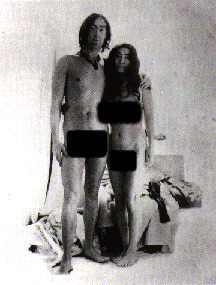Davis Virtual Market Links of Solidarity
"The Beatles" by Allan Kozinn (Phaidon, 1995, distributed by Chronicle Books) is wonderful, sure to please anyone who ever hummed along to a Beatles tune or tried to choose a favorite between John, Paul, George and Ringo. According to Kozinn, the four young men from Liverpool who forever changed the face of rock 'n' roll over the course of a few brief years were brilliant if unschooled musicians. "The Beatles" is part of Phaidon's series on 20th century composers and the Beatles are the only rockers on the list.
But Kozinn, a music critic for The New York Times since 1977, more than makes his case on behalf of the Beatles as musicians. He writes about John Lennon, Paul McCartney, George Harrison and Ringo Starr dispassionately but with considerable respect. For instance, their personal lives become pertinent only to the extent their music is impacted. This isn't a book for groupies.
Instead, he focuses on what made the Beatles great musically. He compares the group from their early days in 1962 when they were playing other people's simplistic rock music at the Cavern basement club in Liverpool to a mere five years later when they released their original, complex and beautiful "Sgt. Pepper's Lonely Hearts Club Band" album. "The Beatles' metamorphosis from the tough, provincial rock band of 1962 to sophisticated musicians...in just under five years is an astonishing story of musical development," he says.
Not only did the Beatles show inventiveness and experimentation in their music but the group's songs are durable because they are so good.
"The lyrics are unusually articulate and Lennon, McCartney and later Harrison proved to be not only inventive, original melodists but skilled manipulators of song structures. The music survived the rebellious Anglo-American 1960s youth culture that spawned it and flourished outside its original context," he adds.
"During their years together, the Beatles released roughly 10 hours of music with scarcely a loser in the lot. They raised the stature of rock music and forged a high artistic path from which other rock composers could set out...Yet not one of the Beatles studied music formally and none of them could read musical notation. They achieved what they did entirely by instinct and on the effervescence generated in a perfectly balanced, freakishly rare form of musical and personal chemistry."
Someone must be taking the Beatles seriously. The manuscript of the lyrics to "I Want To Hold Your Hand" is now in the British Museum.
Kozinn describes the move from a simple style of music using guitar and drums to the increasingly sophisticated techniques the Beatles used in composing and recording. Outside trumpets and saxophones were added to McCartney's "Got to Get You Into My Life" on the 1966 album "Revolver." On the same album, a French horn soloist was brought in to play on "For No One," and McCartney asked producer George Martin to supply a string score for "Eleanor Rigby."
"Some of the songs (on 'Revolver') demanded more traditional rock instrumentation. Harrison's 'Taxman,' which opens the record, is a plain rocker with a sizzlingly virtuosic guitar solo, not by Harrison but by McCartney, whose facility had clearly outstripped that of the band's lead guitarist. Lennon's 'Doctor Roberts' and 'And Your Bird Can Sing,' also are straightforward guitar, bass and drum pieces, the latter distinguished by a fabulous electric guitar obbligato multitracked in thirds by Harrison to create a running chordal effect. McCartney's lighter, bouncier piano-based 'Good Day Sunshine,' and the gorgeous 'Here, There and Everywhere' are free of fancy effects and orchestral overdubs."
Kozinn's 240-page paperback includes this kind of description and analysis of most of the Beatles' songs, a clear and concise narrative, plus black and white photos and an excellent bibliography on Beatle biographies, memoirs, interviews, guides to locations and discographies.
Kozinn suggests that the breakup of the Beatles was inevitable because there was too much talent confined in one unit. John, Paul and George were each writing their own songs and wanted to concentrate in different areas. But the energy that worked so magically within the foursome completely dissipated when they began to pursue solo careers.
In the spring of 1965 I was spending the weekend, a school break, in London. My girlfriend's mother was giving me a ride home late at night when we passed by a nightclub. The unmistakable-looking George Harrison was standing outside helping Pattie Boyd into his white Aston-Martin DB5 parked at the curb.
"There's George!" I cried and my friend's mother gave chase. We followed George through the streets of London, round Marble Arch, until his car darted behind a gas station into a subterranean garage and disappeared. From that moment on, George was my favorite Beatle.
 "Two Virgins"
"Two Virgins"By Allan Kozinn; series edited by Norman Lebrecht.
Published by
Phaidon Press Limited
1995/240 pp/$20
Elisabeth Sherwin's
review can be found in
'The Beatles' reminds fans:
They were great musicians,"
the March 24, 1996,
PRINTED MATTER column.
For viewing only by those that are not offended
by the natural human form and
for viewing in communities of the world
where freedom of speech and expression are permitted,
press here to view the unretouched photo.
Warning: viewing the unretouched photo is unlawful, restricted, banned or subject to censorship in many countries or communities around the world.